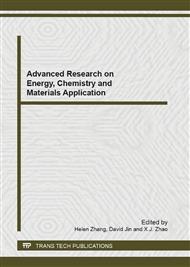p.227
p.231
p.236
p.240
p.246
p.251
p.255
p.259
p.263
The Movable Resource Volume Evaluation of Qingshankou Formation Shale Oil in Northern Songliao Basin
Abstract:
Northern Songliao Basin contains a large amount of oil shale resources. Due to the limitation of the oil and gas enrichment area, movable oil and gas and mining conditions, must determine the advantageous area of movable resource. Based on the improved Δ logR model, evaluated the organic matter abundance and residual hydrocarbon content; Based on the least squares method, established a model between clay mineral and well logging curve and calculated clay mineral content; Combined with organic carbon and residual hydrocarbon, evaluated movable oil amount. The evaluation results show that Qn1 Member favorable area mainly concentrated in the central and northern part of Qijia-Gulong depression and the middle part of Longhu Pond-Daan terrace; Qn23 Member favorable area mainly concentrated in Longhu Pond-Daan terraces middle part and southern and middle part of Qijia-Gulong depression. Qn1 Member movable oil resource is 150 million tons, Qn23 Member movable oil resource volume is 350 million tons, total movable oil resource of Qingshankou Formation is about 500 million tons.
Info:
Periodical:
Pages:
246-250
Citation:
Online since:
November 2013
Authors:
Price:
Сopyright:
© 2014 Trans Tech Publications Ltd. All Rights Reserved
Share:
Citation:


